I spent 22 days in West Malaysia during my 9-month backpacking trip around Southeast Asia. I started in George Town and ended in Kuala Lumpur, spending five nights in George Town and four in KL. Although I enjoyed most of my time in Malaysia, I can say that in some cases you might want to skip Kuala Lumpur and maybe even extend your stay in George Town.
Guide Card for Kuala Lumpur
- Who should visit: City lovers; foodies; shoppers; skyline seekers.
- Who should skip: Nature and wildlife fans; budget travellers
- Backpacker note: Quieter social scene than Thailand/Cambodia/Vietnam; alcohol is more expensive.
- Solo travel: Fine if you don’t rely on nightlife to meet people.
- Suggested stay: 24–72 hours.
- Must‑dos: Batu Caves; Petronas Towers; food neighbourhoods; rooftop bar.
For Who Is Kuala Lumpur Worth Visiting and Who Should Skip It
Visit Kuala Lumpur if you crave city life: skylines, roof top pools and bars, huge malls and rich Malay-Chinese -Indian mix of street food and attractions. Foodie? Book your flight to KL.
If you still want excellent food but without the hectic pace, choose George Town, Penang. Colonial streets, layered history, easy access to nature and as well a three‑way street‑food scene make it a gentler alternative, and daily costs are lower.
Personally, I preferred George Town for its calmer vibe, closer nature access and deeper history. The Indian neighborhood in George Town, for example, felt quieter and nicer to explore than the Indian neighborhood in KL because traffic was far lighter.
Backpackers looking for that backpacker partyvibe should adjust their expectations. Malaysia’s majority‑Muslim culture and a higher alcohol taxes mean a quieter social scene than in Thailand, Laos, Cambodia or Vietnam. Many young solo travellers I met found it harder to meet other backpackers and left sooner than planned. I travelled solo and didn’t miss the backpacker vibe.
Practical takeaway: treat Kuala Lumpur as a short, rewarding urban stopover and a convenient hub for onward travel in Southeast Asia. You can see the main highlights in 24 hours, but 48-72 hours would give you room to experience it fully.
What to Except on Arriving to Kuala Lumpur
Expect a vibrant, bustling city where sleek skyscrapers rise beside traditional neighborhoods. Kuala Lumpur blends Malay, Chinese, and Indian influences in its sights, sounds, and street food. The climate is hot and humid year-round, so pack breathable clothing.
Most travelers receive 90-day visa-free entry, but check your country’s requirements before departure. Kuala Lumpur International Airport (KLIA) sits about 60 kilometers from the city center. The KLIA Express train is the fastest way into town (around 45 minutes), while taxis and ride-hailing services vary depending on traffic.
Once you’ve checked into your hotel and hunger kicks in, head straight to the street food markets—they’re the best way to dive into the city’s flavor and energy.
Map Overview of Kuala Lumpur: Street Food Zones, markets, sights and areas where to stay.
Street food zones are marked with red shapes, markets with purple, recommended neighborhoods with blue, and sights with orange pin drops—click the top-left icon to view map details.
Need data on arrival?
If you need a data for the trip consider getting an eSim: YeSim
The Food Scene
Kuala Lumpur is a great place to eat. You get to choose between three totally different cuisines: Malay, Chinese, and Indian. Each has its own style, flavours, and street food traditions.
For deeper insight, pick one cuisine per day. Chinatown for Chinese hawkers; Brickfields for Indian banana‑leaf meals; Kampung Baru for Malay staples. Visit nearby markets during mealtimes to watch daily life unfold. That way, you get to notice the details. How the food is served, how people eat, and what makes each style unique.
And since many food areas are right next to local markets, you’ll get a dose of daily life while you eat. It’s not just about the food. It’s the full street experience.
Kuala Lumpur’s Real Street Food Zones
There are the true street food zones — sit on a plastic stool, order small dishes from different stalls, and let another stall bring your drinks. Chinatown was my favourite area.
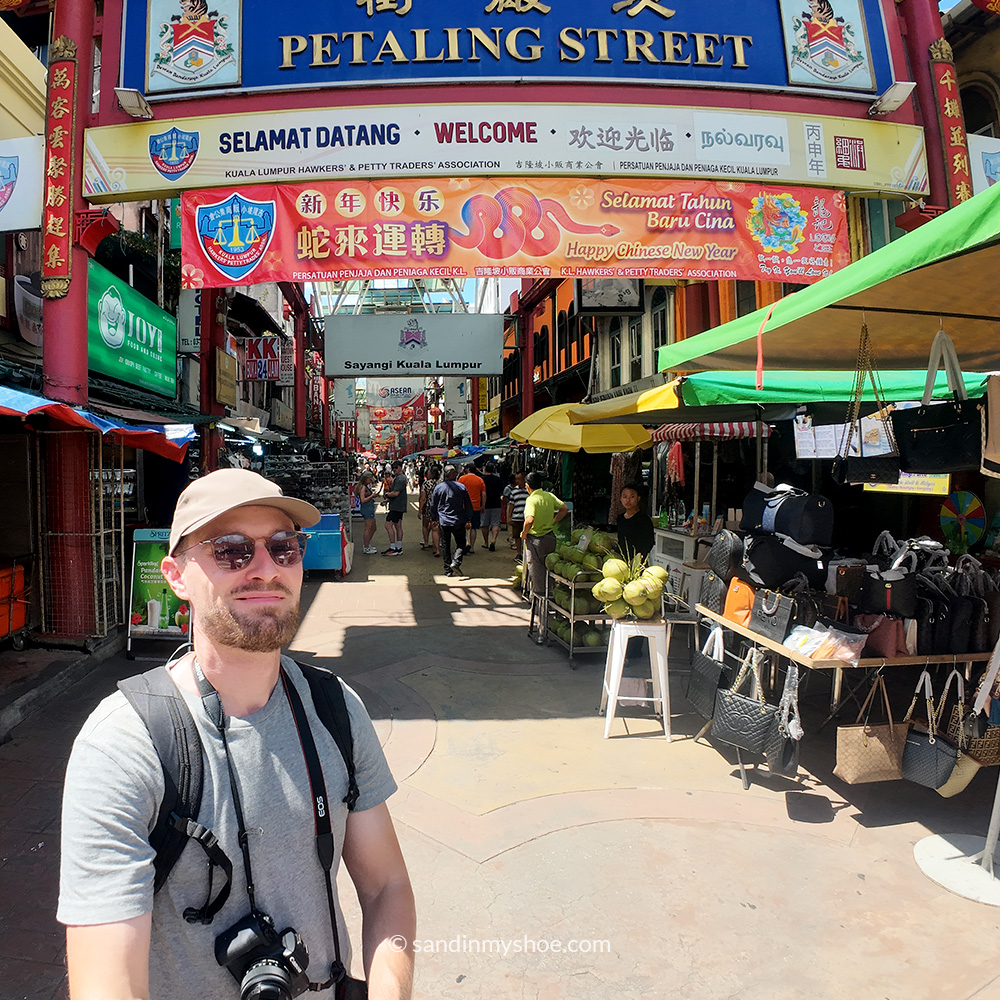
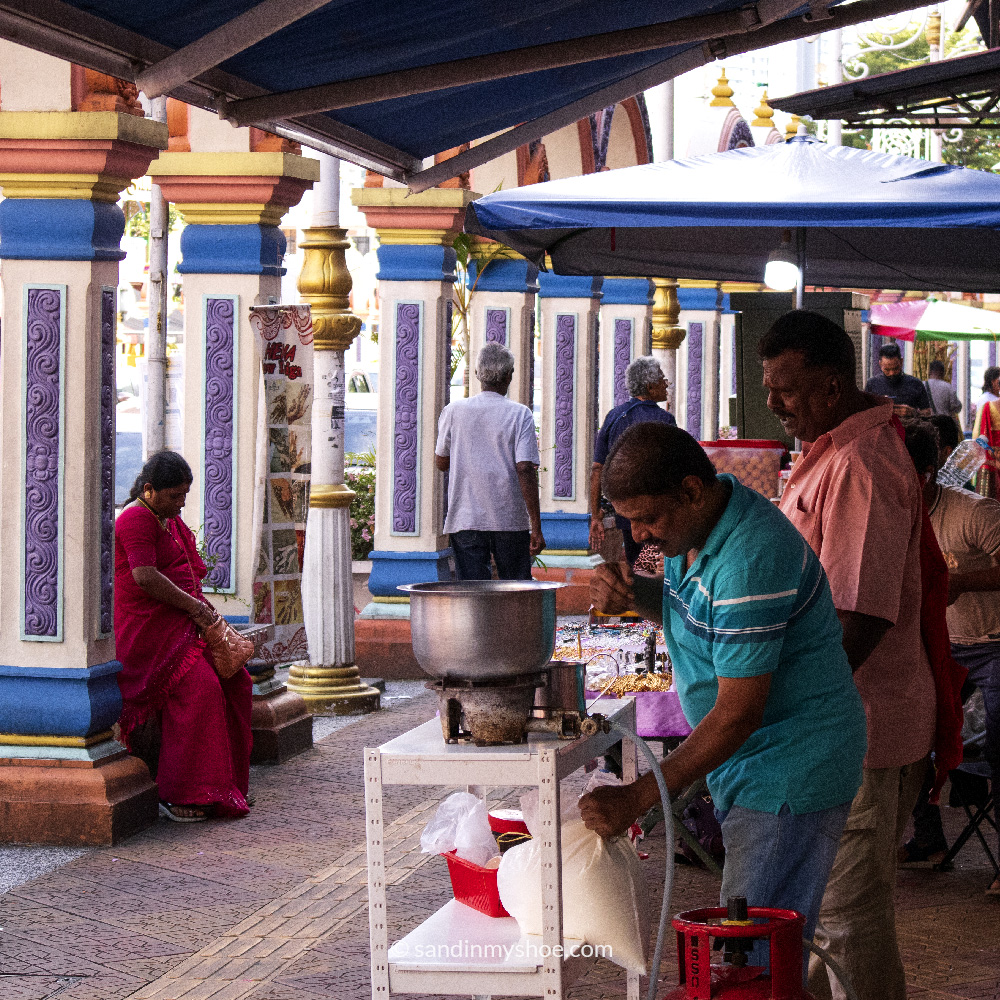
- Jalan Alor (Bukit Bintang): KL’s most iconic street-food strip; food stalls dominate the lane, with a few scattered vendors along Bintang Walk. Active roughly 6 PM to midnight.
- Petaling Street (Chinatown): Active from late morning into night. Chinese hawker stalls and a souvenir/knock‑off market; Restaurant Mee Tarik was my personal favorite.
- Kampung Baru: Night market with traditional Malay food and stalls selling clothes. Best in the evening, from about 6 PM onward.
- Brickfields Little India: Banana‑leaf rice, thosai, murtabak; clothing and shops focused on Indian culture and festivals. Market
- Taman Connaught Night Market Cheras: Skewers, fried snacks, bubble tea; massive weekly night market open Wednesdays only.
Markets
These tourist-focused shopping spots exclude street-food areas and Bintang Walk.
- Central Market (Pasar Seni): Batik, handicrafts, souvenirs, local snacks; air‑conditioned and very tourist‑friendly. Best mid‑afternoon.
- Kasturi Walk: Open‑air stalls beside Central Market for accessories, small gifts, and snacks; quick browse option. Best late afternoon.
- Jalan Masjid India Bazaar: Textiles, scarves, traditional Indian wear and festive goods; ideal for saris and decorative fabrics. Best late morning–early evening.
- Amcorp Mall Flea Market (Petaling Jaya): Weekend flea market for vintage finds, records, and independent stalls; good for unique souvenirs.
Top Sights
As I wrote about the food scene and markets above, this section covers the city’s main sights beyond eating and shopping. I visited all the major sites except the National Museum.
Main Sights
- Batu Caves: Limestone caverns with the large Lord Murugan statue and a steep flight of steps leading to the Temple Cave; there are monkeys everywhere; arrive early to avoid heat and crowds; not very accessible for mobility‑limited visitors.
- Petronas Towers: Iconic twin towers with KLCC Park framing the best photo angles; the skyline looks futuristic at golden hour; consider whether you want to pay for the observation deck or save time and enjoy the view from the park.
- Thean Hou Temple: Colourful Chinese temple on a hill; good for photos and a short cultural stop.
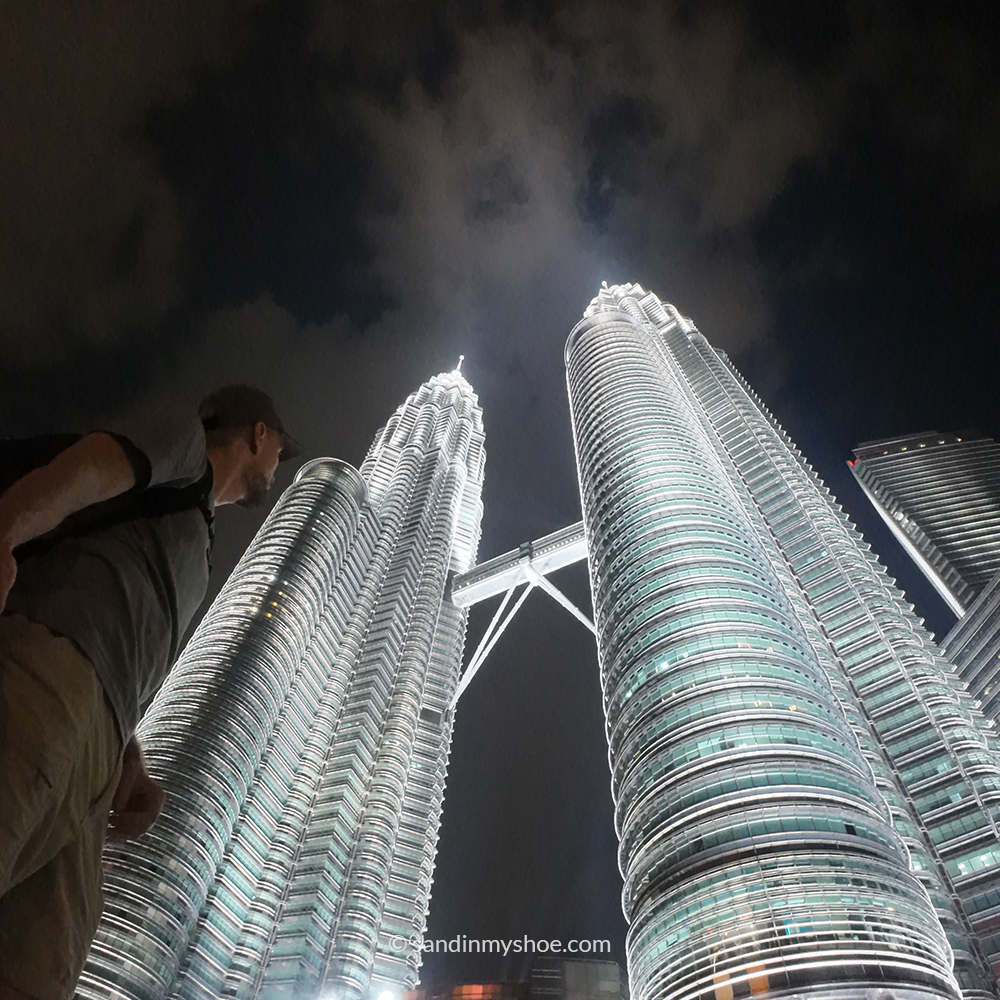
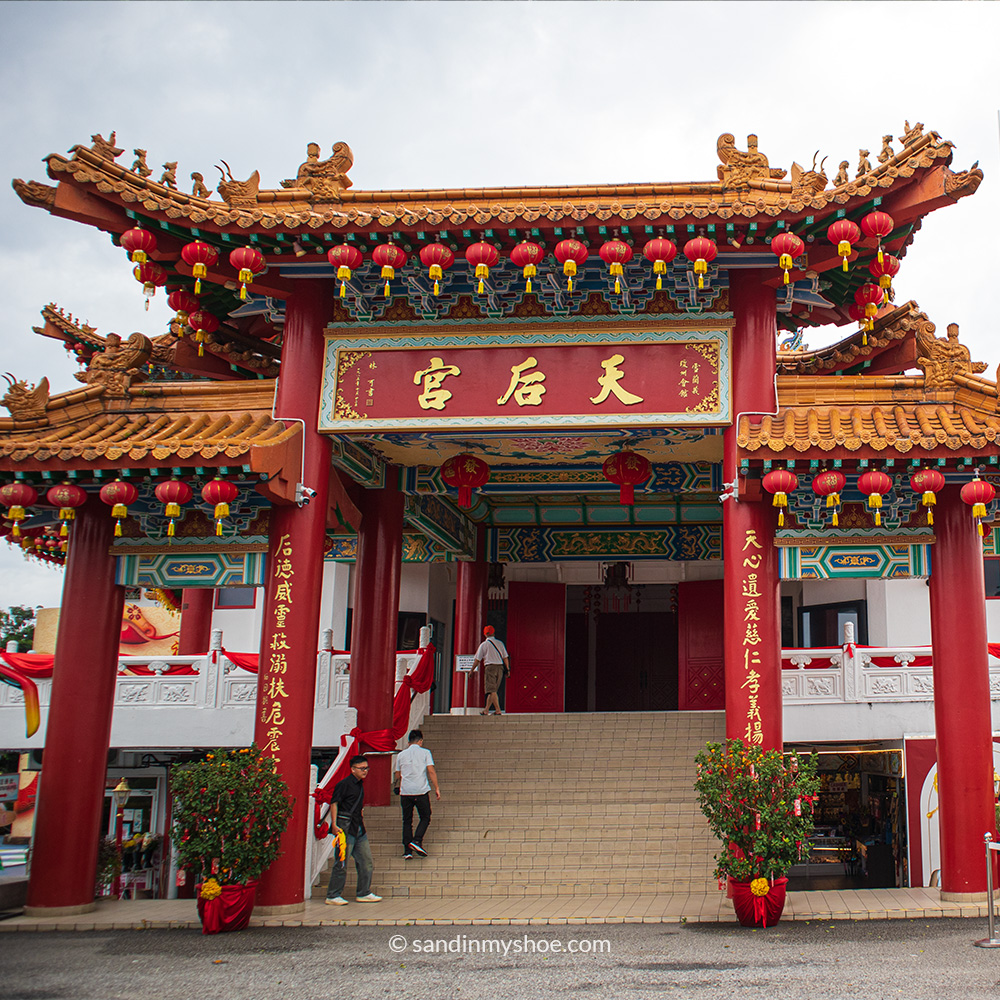
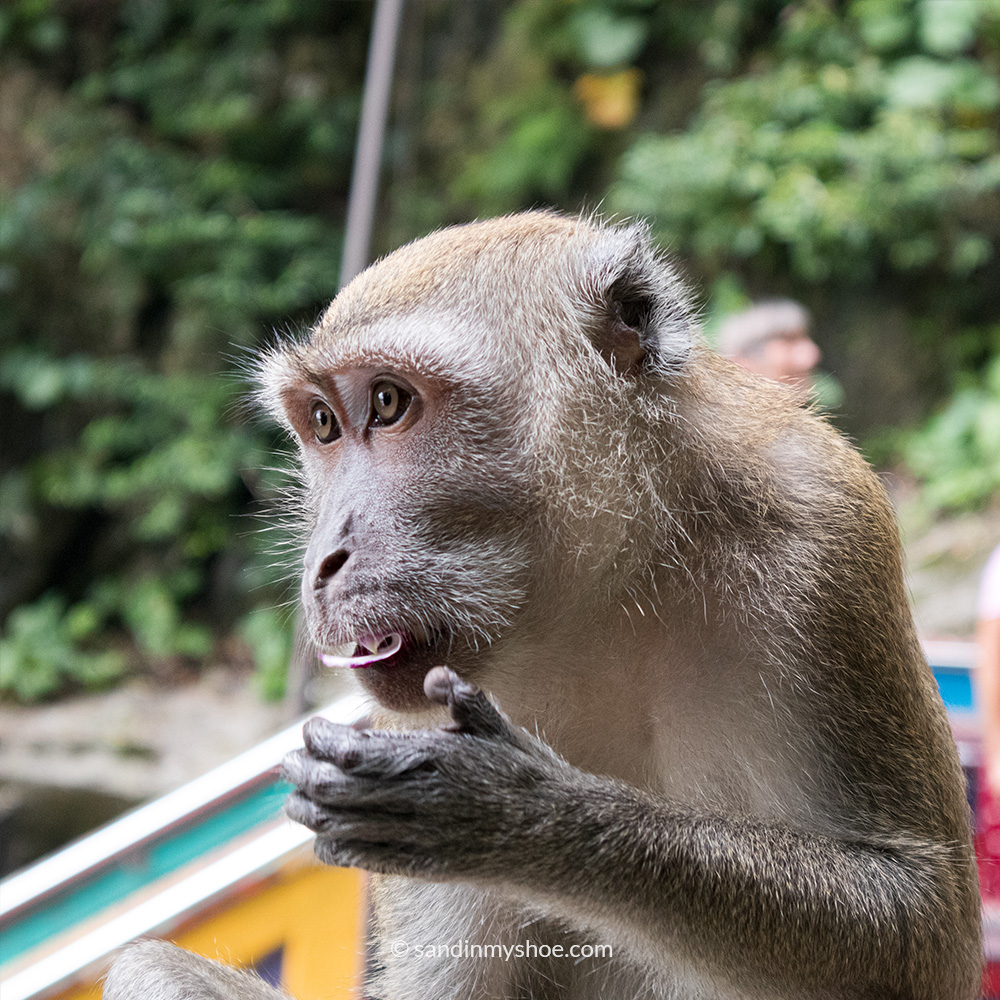

Other Central Sights
- Independence Square (Dataran Merdeka) and Sultan Abdul Samad Building: colonial architecture cluster that’s easy to visit on foot.
- National Museum of Malaysia: concise overview of the country’s history; useful if you want deeper context.
If you want to learn Kuala Lumpur’s history while visiting its historic sites, join a guided tour. Several free walking tours run weekly and offer digestible stories and visits to the city’s main historical sights.
Where to Stay
Kuala Lumpur isn’t a fully walkable city—its top sights and street food zones are scattered across different neighborhoods. While areas like KLCC and Bukit Bintang are pedestrian-friendly, most visitors rely on trains, buses, or ride-hailing apps to explore the city comfortably.
Recommended areas for first-time visitors:
- KLCC (Kuala Lumpur City Centre): Pricey area with luxury hotels, skyline views, and proximity to Petronas Towers.
- Bukit Bintang: Shopping, nightlife, and street food in a lively, walkable zone.
- KL Sentral: Transport hub with easy access to trains and day trips.
- Chow Kit: Local markets and budget-friendly stays with authentic KL flavor.
Day trips from Kuala Lumpur
There are a few worthwhile day trips you can arrange from Kuala Lumpur.
Kuala Selangor Firefly Tour
A Kuala Selangor firefly tour is a quiet boat ride at night where thousands of tiny green lights flash in the trees like stars in the sky. Best experienced in the dry season (May–September) when skies are clearer and river conditions are calm. Book a guided tour that includes the boat ride and a local dinner for the smoothest experience.
Daytrip to Melaka (Malacca)
Another popular option is Melaka (Malacca), a city rich in Dutch, Portuguese and British colonial history. You can see the main sights in a single long day, but two days let you enjoy the landmarks at a relaxed pace. Follow the city’s historical trail from Dutch to Portuguese to British sites to get the most coherent view of its colonial past. I have made a chronological walking tour of Malacca.
Short itinerarires: 24, 48, 72 hours
24‑Hour Itinerary
Quick Highlights
Use grab to get around in order to maximize your time.
Morning
Batu Caves — arrive early to avoid heat and crowds; steep stairs and shrine; banana‑leaf stalls near the base.
Thean Hou Temple — short photo stop; hilltop site with steps.
Afternoon
Brickfields (Little India) — lunch (banana‑leaf rice, thosai).
Rooftop pool access — book pool access in advance if you’re not a hotel guest.
Return to hotel to refresh.
Night
KLCC / Petronas Towers and KLCC Park for golden‑hour photos.
Jalan Alor (Bukit Bintang) for street food (grilled seafood, satay). Optional rooftop bar for a nightcap (book sunset table).
48‑Hour Itinerary
Neighbourhoods and Night Markets
Follow the 24‑hour plan for the first day. Below is the recommended second day.
Morning
Free walking tour (colonial KL or Chinatown) — book ahead; about 2 hours.
Afternoon
Central Market (Pasar Seni) + Kasturi Walk — crafts, snacks and souvenirs; try wantan mee or Hainanese chicken.
Short cultural stop: Islamic Arts Museum or Sultan Abdul Samad Building exterior (check opening hours).
Night
Dinner in Chinatown (Petaling Street or a kopitiam) and night‑market wandering. Optional: live music or bar on Changkat Bukit Bintang.
72‑Hour Itinerary
Leisure and Skyline Finishes
Follow the 48‑hour plan. Below is the recommended third day.
Morning
Free morning to rest, explore nearby streets, or visit a café.
Afternoon
Gentle wandering: KLCC Park, Perdana Botanical Garden or café hopping; last‑minute shopping or luggage storage in a hotel concierge.
Night
Fine‑dining reservation (fusion or modern Malay) — book early.
Rooftop bar for sunset and skyline views; reserve a table for sunset.
Common Questions
Kuala Lumpur is slightly pricier than George Town, especially when it comes to accommodation and dining in central areas. Compared to neighboring countries like Laos, Cambodia, and Vietnam, Malaysia as a whole tends to be more expensive — but still offers great value for travelers seeking comfort and convenience
No, stick to bottled water.
Yes, the level of English is very high compared to other Southeast Asian countries.
Generally yes, but look for stalls that are popular.
Credit cards are widely accepted, but carry cash for markets and small vendor.
Hot and humid, with frequent afternoon showers. Lightweight, breathable clothing is essential and an umbrella.
Final verdict: Is Kuala Lumpur Worth Visiting or Should You Skip it?
Kuala Lumpur is worth a visit, but how long you stay depends on your route and priorities.
If George Town is already on your itinerary, one full day in KL lets you hit the highlights. Climb the steps at Batu Caves, admire Thean Hou Temple, explore Brickfields, relax at a rooftop pool, and end the day at KLCC or Jalan Alor for dinner and city lights.
If you aren’t going to George Town, plan 48–72 hours to enjoy the sights, a rooftop or a relaxed food crawl without rushing. Backpacking with flexible time? Treat KL as a useful hub and spend two to three days to balance sightseeing, eating and onward travel.
My favorite favorites were the Batu Caves and the food at Mee Tarik Restaurant in China Town.

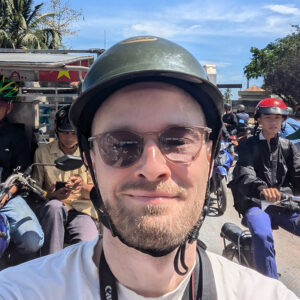
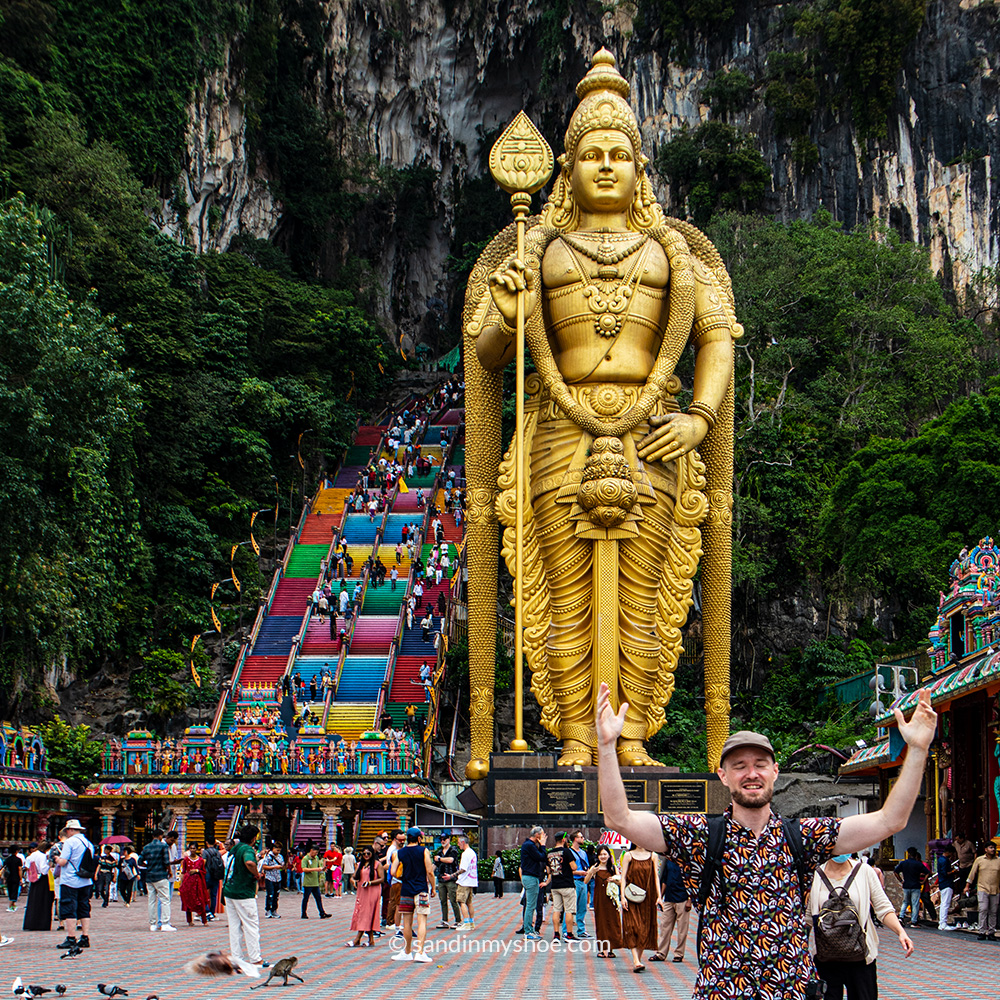




No comments yet, be the first one!
I appreciate hearing from you. If you have any suggestions, questions, or feedback, please leave a comment below. Your input helps ensure the information stays relevant and up to date for everyone.
Thank you for sharing your thoughts!